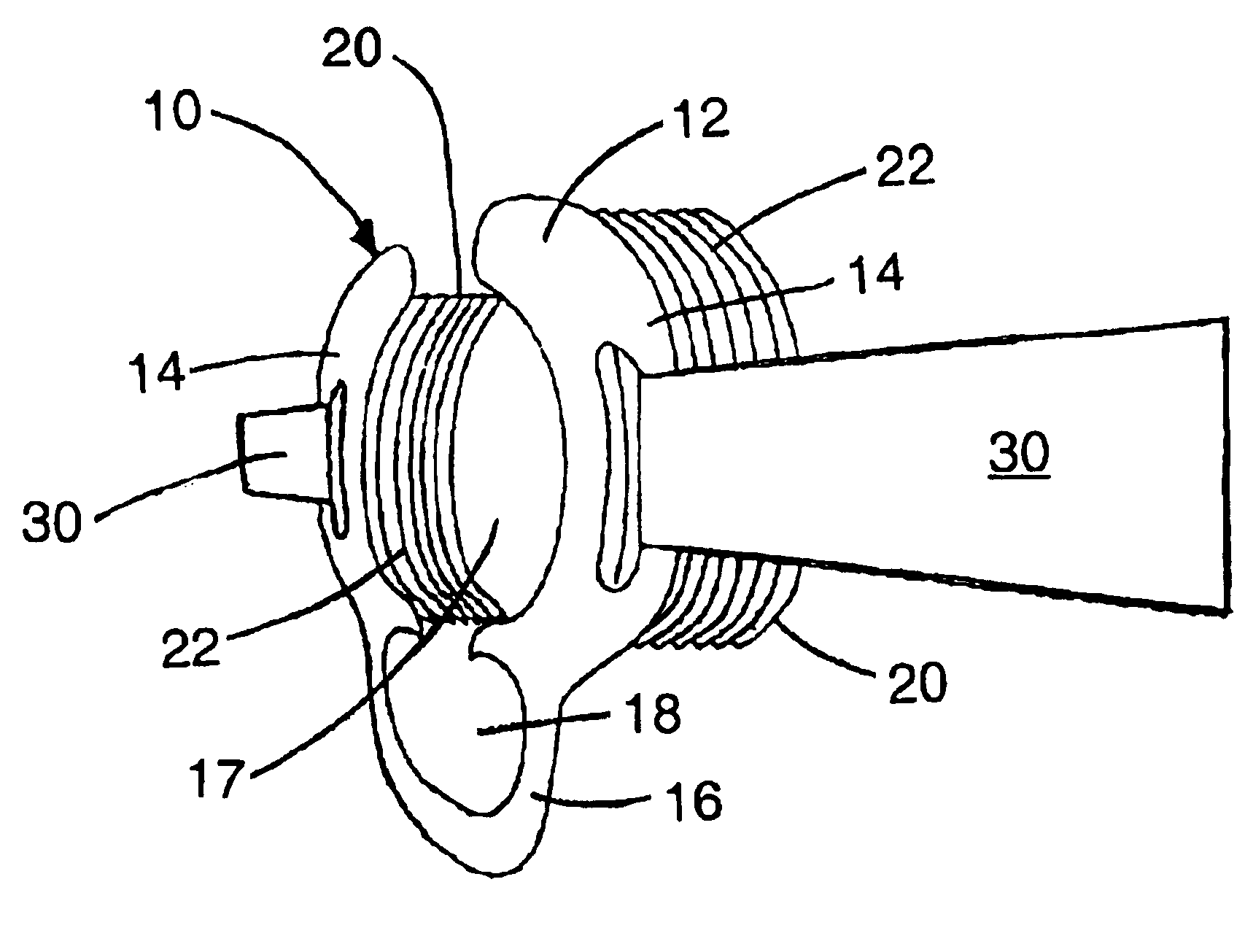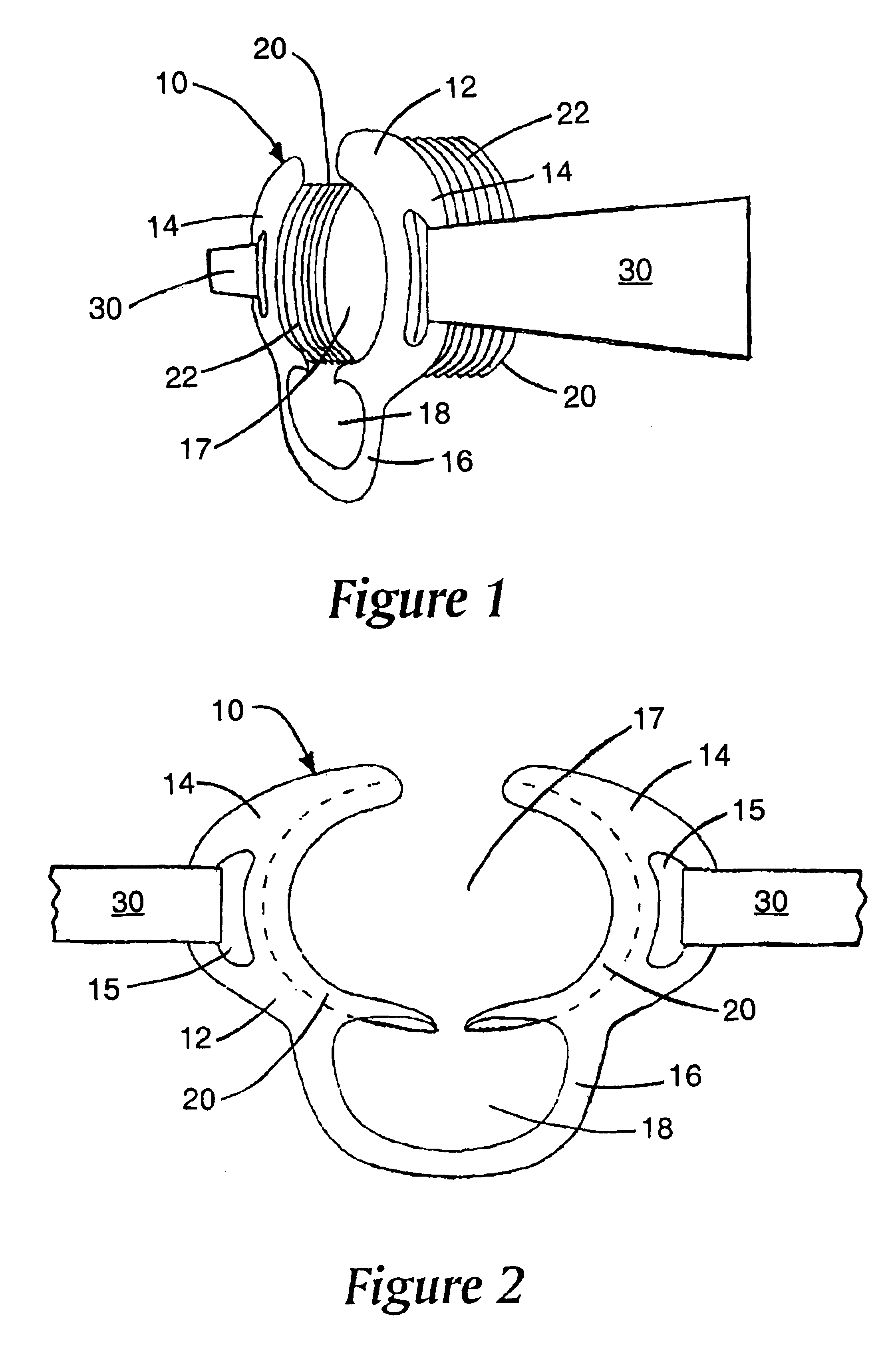Mandibular occlusal inhibitor
a mandibular occlusal and inhibitor technology, applied in the field of mandibular occlusal inhibitors, can solve the problems of difficult radiographic imaging, difficult diagnosis of spinal injury in patients who are uncooperative, and difficult radiographic imaging,
- Summary
- Abstract
- Description
- Claims
- Application Information
AI Technical Summary
Benefits of technology
Problems solved by technology
Method used
Image
Examples
Embodiment Construction
Referring now to FIGS. 1-11 generally, and FIG. 1 in particular, a mouth positioning device in accordance with the present invention is shown and designated generally by reference number 10. Wherever possible, the same reference numbers will be used throughout the drawings and the description to refer to the same or like parts.
FIG. 1 is a perspective view of the mouth positioning device 10. The device 10 is configured to support and maintain a patient's mouth in an open position to permit completion of various medical, dental and surgical procedures. The device 10 may be used in a number of applications, including but not limited to, radiology, endoscopy, dentistry and surgery. In radiology, the device 10 can be used in emergency trauma rooms or in free-standing radiology suites.
Referring now to FIGS. 1-2, the device 10 comprises a body portion 12. The body portion is formed of one or more radiolucent materials that permit passage of radiation or x-rays. In this way, radiographic im...
PUM
 Login to View More
Login to View More Abstract
Description
Claims
Application Information
 Login to View More
Login to View More - R&D
- Intellectual Property
- Life Sciences
- Materials
- Tech Scout
- Unparalleled Data Quality
- Higher Quality Content
- 60% Fewer Hallucinations
Browse by: Latest US Patents, China's latest patents, Technical Efficacy Thesaurus, Application Domain, Technology Topic, Popular Technical Reports.
© 2025 PatSnap. All rights reserved.Legal|Privacy policy|Modern Slavery Act Transparency Statement|Sitemap|About US| Contact US: help@patsnap.com



